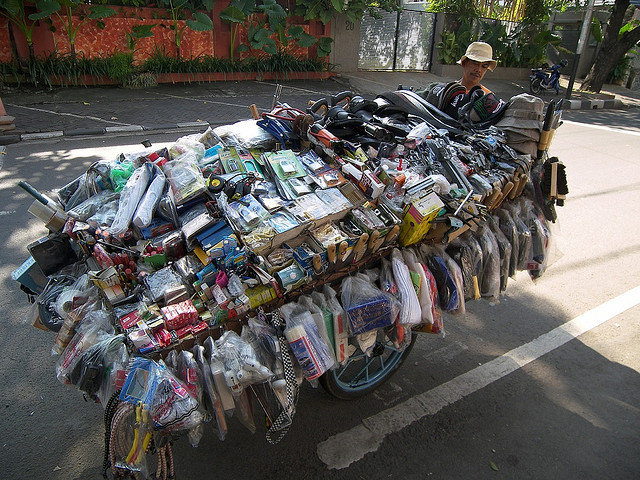Putting Numbers on Multinationals’ Impact is Even Harder Than it Looks
Editor’s note: This post originally appeared in Global Envision, a blog managed by NextBillion Content Partner Mercy Corp.
Multinational companies like to describe their presence as a boon to developing countries. In a remarkable joint study published in 2005, Oxfam International and Unilever Indonesia found such claims are valid—sometimes.
The British antipoverty NGO and the Anglo-Dutch consumer products company were looking for new ways to help the world’s poor—and new ways to talk about the things they were already doing. Was Unilever’s Indonesia operation improving the lives of Indonesia’s poor and wider economy? If so, how much?
So in 2005 they agreed to open Unilever’s books and try to figure it out.
As more consumers desire social responsibilty to be a part of their favorite brands, it’s worth taking a new look at this example of foreign direct investment to see how it sheds light on whether even a “standard” global business model can have significant benefits for an emerging economy.
In 2005, 15.8 percent of the Indonesian population was living in poverty and roughly half were “near poor” and extremely vulnerable to economic instability, according to the World Bank. Since Unilever and its local subsidiary, Unilever Indonesia, have worked in the country in some form or fashion since 1933, the company has placed an emphasis on building consumer demand, adding value along the supply chain, and building up its business.
What worked
- Building a broad value chain
Key among the report’s findings was the immense economic reach of both the supply and distribution portion of Unilever Indonesia’s value chain. According to the report, “about 300,000 people make their livelihoods from Unilever Indonesia’s value chain. Total value generated along the Unilever Indonesia value chain is conservatively estimated at US$633 million. Of this, Unilever Indonesia earns about US$212 million … the remaining US$421 million is distributed among other actors in the chain.” Considering Unilever Indonesia is consistently ranked as one of the largest private companies in the country, this amount certainly carries an appreciable in impact.
- Supporting employees and a small distributor network
Unilever Indonesia and many of its supply companies paid and treated direct employees far above legal standards, “placing Unilever in the top quartile of Indonesian companies.” One of the biggest surprises was the network of small distributors, with approximately 1.8 million vendors selling Unilever Indonesia products. Many of these vendors would not have been able to sell product if not for the company’s unique sachet marketing strategy. Sachet products are small amounts packaged and sold, focusing on single or limited use (like a small shampoo/conditioner duo rather than full-bottle sizes).
?RELATED Small is Beautiful, Small is Cheap, But Do the Poor Care?
- Strengthening supplier relationships
Unilever Indonesia goes well beyond transactional relationships with many of its suppliers. The company provides robust technical assistance programs like management strategies and environmental controls. Occasionally, Unilever Indonesia even creates wholly new businesses by spinning-off aspects of its supply chain. In addition, Unilever Indonesia created a pilot program with a university to bring small farmers into the supply chain. The long-term benefits of these activities are difficult to quantify but assuredly impactful. As noted in the report, Unilever Indonesia focuses on long term results through strengthening the local economy.

Operational Weaknesses
- Contract Employment
Oxfam found that contract employees of both Unilever Indonesia and its suppliers were paid and treated substantially worse than permanent employees. Of particular concern was the treatment of female employees over issues of pay and leave. Also, contracts with small farmers placed heavy financial burden due to lack of guarantees or any upfront support.
- Discriminatory Marketing
Additionally, Oxfam questioned the large-scale marketing of sachet products. While the items allowed poor consumers to access the products (in small quantities with a correspondingly high price per unit). It left Oxfam wondering if Unilever Indonesia was creating demand instead of meeting it.
- Extracting Wealth
Lastly, Unilever Indonesia offset its initial capital investment through a negative balance of trade:
“Because UI imports inputs and purchases foreign currency for its business operations, and remits dividends to shareholders outside the country (85 per cent), there is a net outflow of funds, showing that even a locally-based company like UI with only modest exports can have a negative foreign-exchange impact on the country.”
Foreign Direct Investment works, sometimes
The primary lesson seems to be that, practiced the right way, foreign direct investment can be a huge boon to developing economies. It was projected that Indonesia took in over US $215 million in tax revenue from Unilever Indonesia between 1999 and 2003. That’s just direct corporate tax revenue, not figuring the impacts of people directly or indirectly from the value chain.
But multinational corporations have to practice their foreign direct investments in a thoughtfully structured way in order for a host country to receive the most value. Simply because USAID builds a business park in Haiti (link) or BMW a factory in Chattanooga (link) isn’t going to ensure long-term benefits that transform economies. As a Unilever Indonesia team member observed:
A company has an important ‘product-delivering, wealth-creating, skills-transferring’ role, it is only one participant alongside other businesses, governments, international institutions, and civil-society organisations in the drive for sustainable poverty reduction. For optimum impact, a concerted effort is required.
Obviously Oxfam feels Unilever is a company that does things the right way. The two organizations have gone on to work together in other projects. Most notably in 2010, they launched a joint venture to integrate small farmers in developing countries into Unilever’s supply chain. If these two organizations can work together on projects of such scale, what other great NGO-multinational corporation collaborations are waiting to be developed?
- Categories
- Uncategorized
